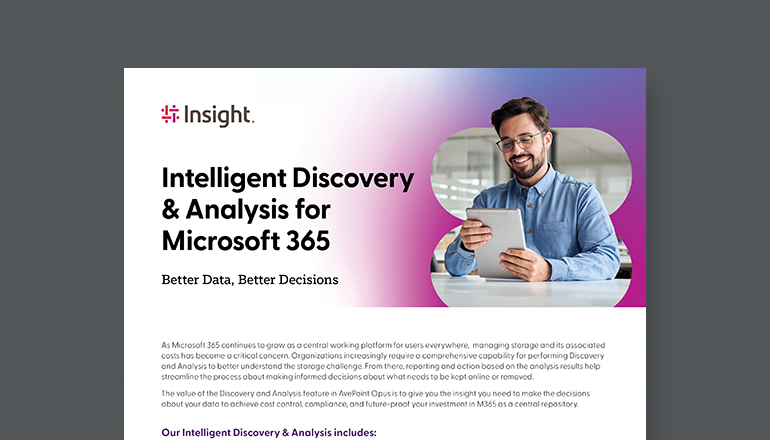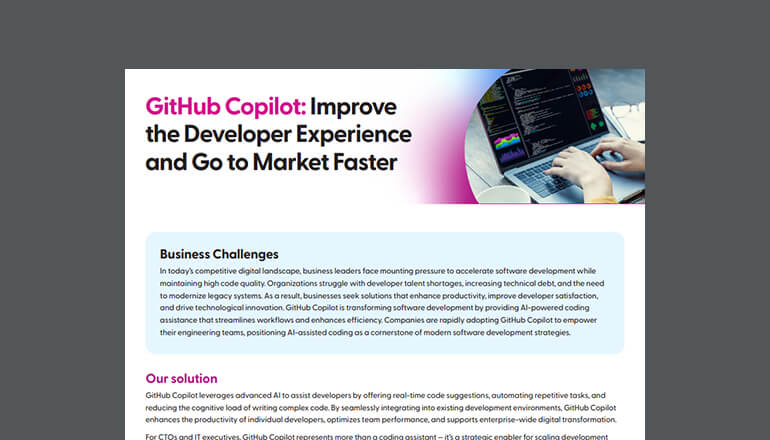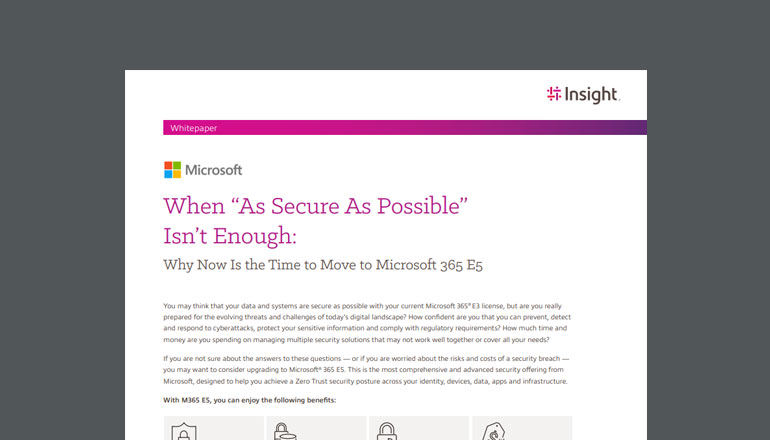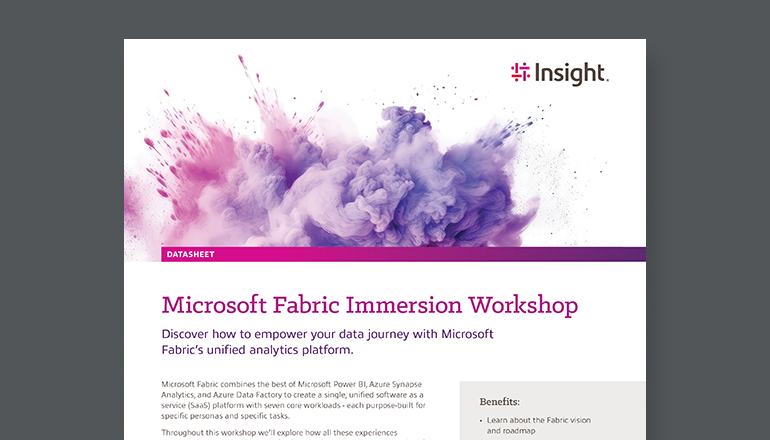Blog Setting The Record Straight: Microsoft 365 Copilot vs Azure AI Studio
Microsoft 365 Copilot and Azure AI Studio both use AI, but they don't do the same things.
By Anna Donnelly / 2 Feb 2024 / Topics: Artificial Intelligence (AI) Microsoft 365 Microsoft 365 Copilot Microsoft Azure

Can you believe it’s been over a year since Microsoft announced their partnership with OpenAI? Within that time, we’ve been gifted with an entirely new vocabulary: “large language models” (LLMs), “prompting” and “grounding”, “trainable classifiers” and more.
On the product side, there are new solutions centered around Microsoft 365 Copilot and Azure AI Studio. If you’re expected to take action on AI it can be difficult to sort through a landslide of information to make the right decisions for your organisation.
Understanding the distinction: Azure AI Studio vs. Microsoft 365 Copilot
There are many misconceptions about Microsoft’s generative AI products — as one of Microsoft’s largest partners, we’ve heard it all. One of the top misunderstandings we’d like to help clarify is the difference between Azure AI Studio and Microsoft 365 Copilot and their respective use cases.
Let’s start with what these two things are:
- Azure AI Studio wraps together Azure AI Infrastructure, Machine Learning, Cognitive Services and Open AI Service to provide everything that’s needed to build AI solutions in one place.
- Microsoft 365 Copilot is a generative AI tool that is integrated with your data in Microsoft 365 and productivity apps like Outlook, Word and more, to provide you with an AI assistant.
AI implementation: Two unique paths
While they are both using AI, these solutions are not interchangeable and don’t do the same things. Building a solution in Azure AI Studio requires you to build the infrastructure and code, provide data, and then train the model yourself. The outcome is a customised solution that responds to prompts from a specific set of data that is trained over time. Microsoft 365 Copilot uses content already available in your tenant, so there is no need to build infrastructure or code, but it is not trained and does not learn anything from your data. Because Microsoft 365 Copilot’s source data operates within the Microsoft 365 Trust Boundary, every user has access to something different, which limits the function of the LLM strictly to natural language processing.
How Microsoft 365 Copilot and Azure AI learn and give you answers
The fact that Microsoft 365 Copilot does not learn from your data is probably the number one misconception we hear about the difference between it, and Azure AI solutions. Think of Microsoft 365 Copilot and Azure AI as two different nine-year-old children that both have basic reading and comprehension skills. Let’s call Microsoft 365 Copilot Child A. Child A is given a giant, generalized textbook and then is asked to use that textbook to answer questions. Child A has reading comprehension skills, and can pick out key words and things that might fit together — but you will have to be very specific about what you need for them to give you the correct answer. Furthermore, the textbook you give them will have to be organized is a way that makes sense to the child.
Child B, a custom solution built using Azure AI Studio has the same reading and comprehension skills. But instead of being given a generalised textbook, you give Child B a textbook on a specific subject that you use to teach the child. When you ask questions, they provide answers based on the textbook and what you have taught them. They learn more from the knowledge you share as time goes on, they learn from mistakes, and can even make connections between topics, eventually interacting as an expert.
In this way, Microsoft 365 Copilot is a general assistant, whereas custom solutions built with Azure AI Studio can work to become experts, each with their own use cases.
Examples of Microsoft 365 Copilot in daily productivity
Microsoft 365 Copilot can assist knowledge workers with their day-to-day activities and make them more productive. Below are just a few of the basic use cases for Microsoft 365 Copilot that anyone with access to a license can get started with in productivity apps right away. Keep in mind that Microsoft is continually adding Copilot capabilities to its solutions and can be found in Power Platform, Power BI, Dynamics 365 and more.
| PowerPoint | Outlook | Word | Teams | Loop |
|---|---|---|---|---|
Writing
Reading
| Writing
Reading
| Writing
Reading
| In-meeting
Post-meeting
Chat
| Writing
|
Examples of Azure AI Studio in daily productivity
Use cases and possibilities for building solutions with Azure AI Studio are limitless. We always advise our clients to begin with an evaluation of your organisation’s needs, but below are a couple of common use cases:
- Smart Virtual Agents can automate and enhance call center operations. For example, your customer service agents can improve customer experience by focusing on resolving complex issues while service bots handle common questions.
- AI models can be leveraged for Enhanced Search Capabilities by processing large datasets for interactions using natural language. Imagine how great it would be if your employees could easily find information on complex financial data, inventory levels, healthcare benefits, and more.
What you need to consider
Here are a few more things to take into account when evaluating Microsoft 365 Copilot and Azure AI Studio for your organisation.
- Microsoft announced the availability of Copilot Studio, which is a low-code development tool that will allow you to refine Copilot responses, among other capabilities such as low-code creation of Copilots. Think of the refinement capability as the equivalent of telling the nine-year-old the chapter in which the answer to your question is located. It will get them closer to the correct answer but is still not a stand-in for an expert.
- Just like nurturing a nine-year-old to eventually hold a doctorate on a particular subject, getting your solution developed using Azure AI Studio to operate indefinitely at an expert level requires effort. This includes maintenance of infrastructure, data models, GUIs, and more.
- Remember that old anecdote “garbage-in, garbage-out” (GIGO)? This applies to both Azure AI Studio development and Microsoft 365 Copilot. This is much easier to accomplish with datasets that can be controlled, in which case planning for custom developed solutions with Azure AI Studio is mandatory. Microsoft 365 Copilot is a bit more complex. We’ve been telling our clients for years about best practices for content and data storage in Microsoft 365; now is the time to employ technical and governance best practices — and educate users on why data hygiene is more important than ever.
As you think through your options, Insight can help.
From readiness assessments to adoption, our team shows clients how to master everyday AI in their businesses and get the most from their investments. Learn more here.
Key takeaways
- A top misconception of Microsoft 365 Copilot is that it does not learn from your data.
- Considerations when evaluating Microsoft 365 Copilot and Azure AI Studio include refinement capabilities, maintenance and data hygiene.
- Microsoft 365 Copilot and Azure AI Studio have different use cases and implementation paths.




